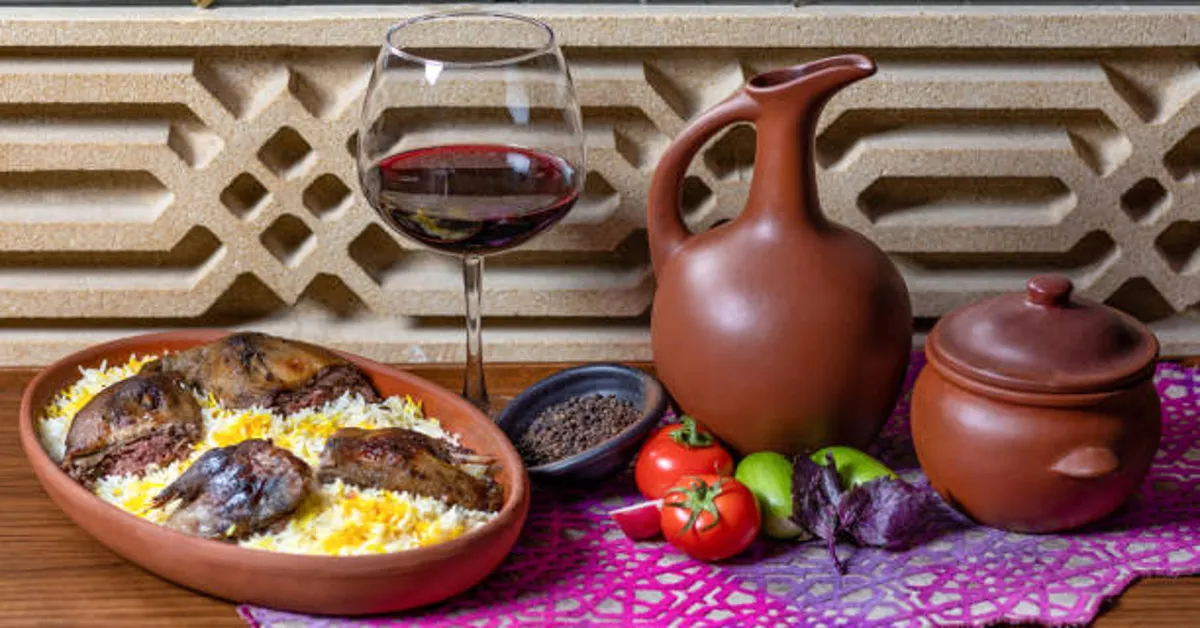Introduction
Food has always served as more than sustenance. It embodies culture, history, and the communal memory of a people. Certain traditional foods not only reflect the resources available in a region but also encapsulate centuries of culinary innovation and cultural adaptation. Among such foods, Kisshk (also spelled Kishk, Kishik, or Keshek depending on regional dialect) stands as a fascinating example of how preservation techniques, nutrition, flavor, and tradition converge. Kisshk is more than a dish—it is a food philosophy rooted in ingenuity, sustainability, and community living. Though its name may be unfamiliar to some, this fermented dairy and grain product has deep roots in Middle Eastern, Eastern Mediterranean, and North African cuisine, and continues to be celebrated for its versatility, rich flavor profile, and nutritional value.
In this comprehensive exploration, we will uncover what Kisshk is, how it is made, its historical background, the regions where it thrives, its role in traditional households, and why it remains relevant even in modern culinary landscapes. This article will also delve into the various ways Kisshk is used, how it is stored, and how its legacy persists across generations.
What is Kisshk?
Kisshk is a traditional food product made primarily by combining fermented yogurt or buttermilk with bulgur wheat or barley, and allowing the mixture to ferment and dry under the sun. Once dried and hardened, it is ground into a powder or shaped into small balls, depending on local customs. The final product can be stored for months, even years, without refrigeration, which made it especially valuable in the times before modern preservation and cooling methods were available.
Though it is now often associated with Levantine cuisine—particularly in countries like Lebanon, Syria, Palestine, and parts of Egypt and Turkey—the roots of Kisshk likely extend further back to ancient times when early civilizations discovered fermentation as a technique for preserving dairy and grains. The primary function of Kisshk was not only to ensure food security during lean months but also to create a flavorful and nutritious ingredient that could be easily reconstituted into meals with minimal preparation.
The resulting powder has a distinctive sour and tangy taste, which comes from the prolonged fermentation process. When cooked, it develops a rich, creamy consistency that can be incorporated into stews, soups, porridge, or even used as a seasoning in dry form. Some versions of Kisshk include added ingredients like salt, onions, or dried herbs to enhance its flavor and increase its shelf stability.
Historical Background and Cultural Origins
The story of Kisshk cannot be told without acknowledging its deep connection to the history of pastoral and agrarian societies. In regions where seasonal extremes created periods of abundance followed by scarcity, food preservation was not merely a practice—it was a necessity. Kisshk emerged from the intersection of two easily available ingredients: dairy from livestock such as goats, sheep, or cows, and grains cultivated in fields. Through fermentation and sun-drying, communities could ensure that surplus yogurt and milk were not wasted, and bulgur wheat was put to long-term use.
Some historians believe Kisshk was first developed by ancient Semitic cultures that practiced seasonal transhumance—moving livestock from one grazing area to another according to the time of year. These pastoral groups needed food that was portable, lightweight, durable, and nourishing. Kisshk checked all those boxes, and soon found its place as a staple in nomadic and settled communities alike.
Over the centuries, the preparation of Kisshk became embedded in seasonal traditions. In many rural households, late summer was considered “Kisshk season,” when families would gather to make large batches of the mixture, dry it outdoors, and store it in large clay jars or woven baskets. These events were not just culinary but social, often accompanied by storytelling, music, and collective labor.
The tradition of making Kisshk was typically passed down through women, and each household or village often had its own variation of the recipe. Some added garlic or onions; others flavored the mixture with mint or dried red pepper. The drying process itself differed—some preferred to dry the mixture as thin sheets before crushing them into flakes, while others shaped the paste into spheres that hardened into compact balls.
Preparation Process
Making Kisshk is a time-intensive and multi-step process that reflects both scientific understanding and cultural heritage. While the methods may vary slightly from one region to another, the general stages are as follows:
1. Fermentation of Dairy
The process begins with fresh yogurt, laban, or buttermilk, which is left to ferment further for several days. In some traditions, milk is first turned into yogurt and then mixed with a small amount of rennet or previous ferment to speed the souring process. This extended fermentation creates a tangy base that is rich in probiotics and has natural preservative properties.
2. Mixing with Grain
Once the dairy is properly fermented, it is combined with soaked and partially cooked bulgur wheat or barley. The grain absorbs the liquid and creates a thick porridge-like consistency. This mixture is left to sit at room temperature for additional fermentation, usually for several days, while being stirred regularly to ensure even development.
3. Drying
After the fermentation stage, the thickened paste is laid out on cloths, trays, or flat stone surfaces and left to dry under the sun. In hot, dry climates, the drying can be completed within a few days. During this stage, the mixture may be turned or kneaded to enhance uniform dehydration. Some households form the paste into small balls, while others allow it to dry in thin layers which are then broken into flakes or ground into powder.
4. Storing
Once dried thoroughly, the Kisshk is stored in airtight containers or traditional storage vessels like ceramic jars. It must be kept in a cool, dry place to avoid moisture contamination. The powdered form is most commonly used today, especially in urban kitchens, because it dissolves more quickly in cooking.
The entire process—from fermentation to drying—can take up to two weeks and requires careful attention to temperature, cleanliness, and timing. Despite the labor involved, the reward is a shelf-stable product that offers flavor, nutrition, and versatility throughout the year.
Culinary Uses
One of the most remarkable aspects of Kisshk is its culinary flexibility. It can be used in soups, porridges, dips, sauces, and even sprinkled over cooked vegetables or meats. The basic flavor profile—slightly sour, earthy, and creamy—pairs well with both vegetarian and meat-based dishes.
Common Dishes Made with Kisshk:
- Kisshk Soup: One of the most traditional preparations, where Kisshk powder is dissolved in water or broth and cooked with garlic, onions, and sometimes lentils or chickpeas.
- Porridge-Style Stews: Often eaten during colder months, this thicker preparation includes vegetables, pulses, and sometimes shredded meat.
- Sauce for Meat or Eggplant: Rehydrated Kisshk makes a flavorful sauce when combined with tomato paste or lemon juice.
- Bread Topping: Some flatbreads are brushed with olive oil and sprinkled with Kisshk powder before baking for a tangy crust.
- Preserved Ball Form: In some communities, dried Kisshk balls are crushed and added to salads or rice dishes for seasoning.
Its ability to deliver complex flavor with minimal cooking effort makes it an ideal choice for both busy households and gourmet experimentation.
Nutritional Profile
Kisshk is not just flavorful—it’s also highly nutritious. Because it combines fermented dairy with whole grains, it offers a balanced profile of macronutrients and essential micronutrients.
Nutritional Benefits:
- Protein: From both the yogurt and grain components, providing muscle support and satiety.
- Probiotics: Due to fermentation, Kisshk contains beneficial bacteria that aid digestion and gut health.
- Complex Carbohydrates: The bulgur provides slow-releasing energy and dietary fiber.
- Calcium and Magnesium: Essential for bone health and nerve function.
- B Vitamins: Produced during fermentation and present in the grain component.
- Low Fat: Particularly when made from low-fat yogurt, making it suitable for heart-conscious diets.
Its shelf stability and dense nutrient content made Kisshk a vital survival food in historical times, and it continues to be valued by health-conscious consumers today.
Cultural Significance
Kisshk is more than just a pantry item in many homes—it is a cultural artifact. In rural areas, the act of making Kisshk often signifies the end of summer and the readiness for winter. In many cultures, women take pride in their unique recipes and often share jars of Kisshk as gifts or dowry items during weddings.
Kisshk-making events are also seen as a social activity, bringing together generations to collaborate in food preparation. For diasporic communities living abroad, Kisshk serves as a powerful symbol of home, heritage, and identity. Many immigrants take pride in introducing it to new audiences, blending it into fusion recipes, or keeping it alive in family traditions.
Even in modern kitchens, where time is limited and convenience is paramount, Kisshk holds its ground because it delivers depth of flavor with little effort. Restaurants and chefs exploring “ancient grains” and fermented foods are rediscovering Kisshk as a superfood with timeless appeal.
Modern Adaptations and Commercial Production
In recent years, Kisshk has made its way into commercial markets. Supermarkets and specialty food stores now offer Kisshk powder in ready-to-use packaging. Some variations cater to vegan or lactose-intolerant consumers by using plant-based yogurt or alternate fermentation techniques.
Home cooks also experiment with it by using it as a base for salad dressings, seasoning mixes, or even baked goods. Its sour profile works well in dips or spreads when mixed with olive oil and herbs.
Despite these innovations, the essence of it remains rooted in its traditional form. Commercial products may lack the depth achieved through homemade fermentation and sun-drying, which is why many purists still prefer to make it the old-fashioned way.
Challenges and Preservation
While it enjoys renewed attention in culinary circles, it also faces challenges. The decline of rural food practices, urban migration, and the convenience of instant meals have reduced the frequency of traditional preparation. Climate change and environmental shifts can also impact the drying process, making it more difficult to achieve the right conditions naturally.
Efforts are underway in some regions to document traditional recipes, train younger generations, and promote it as a cultural heritage food. NGOs, culinary historians, and food activists advocate for recognizing Kisshk under regional food heritage programs to ensure it continues to be passed on and appreciated.
Conclusion
Kisshk stands as a powerful example of culinary wisdom passed down through centuries. It represents resilience, creativity, and communal living. Whether consumed as a hearty soup, used to season a modern dish, or cherished as a symbol of cultural memory, it proves that food is never just about nutrition—it’s about identity, community, and continuity.
At a time when fast food and processed ingredients dominate our plates, it reminds us of the value of patience, fermentation, and the deep nourishment that comes from honoring our roots. As more people seek meaningful connections to food, it offers not just a taste of the past, but a sustainable path forward.
ALSO READ: Kidskh: A Comprehensive Exploration of a Child-Centric Digital Ecosystem
Frequently Asked Questions (FAQs)
1. What exactly is Kisshk made of?
Kisshk is traditionally made from fermented yogurt or buttermilk mixed with bulgur wheat. The mixture is fermented, sun-dried, and ground into powder or formed into balls for long-term storage.
2. How is Kisshk used in cooking?
Kisshk can be dissolved in water or broth to make soups, used as a sauce for vegetables or meats, or added as a tangy seasoning to breads and salads.
3. Is Kisshk healthy?
Yes, Kisshk is highly nutritious. It contains protein, probiotics, calcium, fiber, and B vitamins, making it beneficial for gut health, bones, and digestion.
4. How long can Kisshk be stored?
When properly dried and stored in an airtight container in a cool, dry place, Kisshk can last for months, even up to a year without refrigeration.
5. Is Kisshk still made at home today?
Yes, especially in rural areas and among traditional households. However, modern versions are also commercially available in grocery stores and online.









